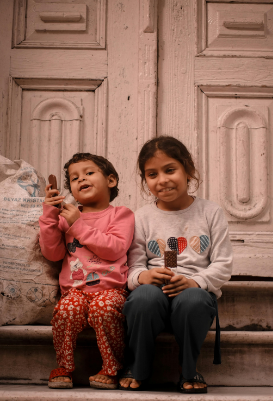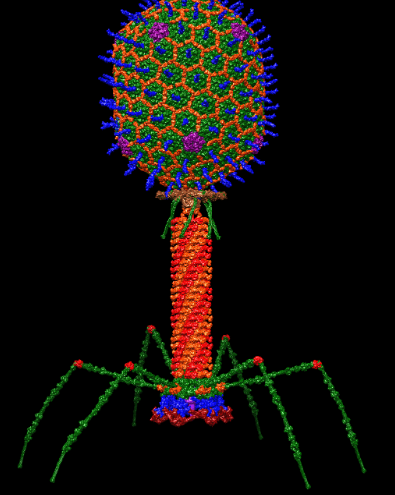
In America, 89% of people have at least one known sibling. Among those who do, around 10% say that their sibling is their best friend. Both in the US and worldwide, siblingship is a common human experience, with there being 1.94 children per household in the US and 2.3 children per household worldwide.
Most of the time, sets of siblings born to the same parents are raised together, fed together and grow up together. Living in the same house, being raised by the same caretakers and going to school in the same locations generally keeps the lives of siblings inseparably intertwined.
More often than not, siblings end up sharing similar personality traits due to sharing inherited genetic information and parallel lived experiences. Despite seeming different from one another and arguing more frequently compared to other interpersonal relationships, the experiences and genetics they share often end up making siblings more alike than different.
But how similar are siblings, really? Can simply being born to the same parents as someone else fundamentally alter who you become and how you grow up? What factors influence their relationships?
To answer those questions, it’s first important to understand the genetic basis of it all. In human reproduction, half of the genetic information (in the form of genes and DNA) in a child comes from their mother, and half comes from their father. This DNA determines a child’s traits, and can influence everything from eye or hair color to personality. Based on the fact that the composition of a child’s DNA is halfway between that of their parents, it seems logical that each child would be genetically exactly halfway between their parents.
But then, if every child’s DNA composition is exactly half that of their parents, how come two siblings born to the same parents can look so different?
Between two different children, both from the same set of blonde parents, one could be born a blonde and the other a brunette. Two parents with dark skin tones can produce a child with a markedly lighter skin tone than either of them. Two perfectly normal and healthy parents can have a child that is born with an incurable, deadly disease. How is that possible?
The answer? Genetics is complicated.
First off, different children don’t actually inherit the same half of their parents’ DNA. It’s a commonly quoted fact that siblings are 50% genetically identical, which seems strange considering that children are also 50% genetically identical to each of their parents.
Many genes are quite simple – each parent gives the child half of their genes (which come in pairs), so the child gets one copy of a pair from each parent. Variation, the scientific term for having different sets of genes, is what allows one person to be different from the next.
But, if it were that easy, siblings would be half different and half the same as each of their parents. The catch is, not all genes are passed down equally – they experience some reshuffling throughout the reproduction process.
As it turns out, most siblings inherit different combinations of their parents’ DNA. Since each parent contributes to half of the child’s gene pool, and genes are generally passed on randomly, it’s possible for a child to inherit some of the other half of their parents’ genes, and therefore look different. In fact, twins who have parents from different ethnic backgrounds may not score similarly on DNA tests that measure their ethnic or national origins.
To further complicate things, many traits aren’t actually controlled by a single gene, like most people think. Eye color, a seemingly simple physical trait, is actually controlled by 16 different inherited genes. A much more complex trait, like an individual’s risk for developing schizophrenia over their lifetime, is potentially controlled by hundreds or thousands of genes. Now, consider how complicated the inheritance pattern for something like personality must be. These inheritance patterns, combined with the fact that children don’t inherit the exact same genes from the same parents, are a large part of what makes siblings different.
Still, genetics aren’t everything. Developmental psychologists have argued for decades over whether a child’s genetics or their environment have a greater influence on who they grow up to be. The “nature vs. nurture debate,” as it’s known, attempts to explore how significant of an effect each factor has on human development.
For example, a famous psychological experiment studying twins raised in different households in Minnesota found that genetically identical twins raised apart for most of their childhoods have similar intelligence test scores, academic interests, social behaviors, and religious attitudes, which indicates a significant genetic contribution to development.
However, other studies such as one from Duke University, found that the behavior of two genetically identical twins raised together varies depending on how they were raised. Five year-olds that grew up in households with mothers that considered them “problem children” or “indisciplined” were considerably more likely to develop depression and anxiety later in life than their twins.
The Journal of Family Psychology also found that when parents assume one child is more academically gifted than the other, that child’s grades improve more than their siblings’ grades. Notably, they also discovered that the reverse, a child’s academic performance influencing their parents’ perceptions, did not occur. Even when children are genetically similar in almost every way, the manner in which their parents raise them has a notable impact on who they become.
Complicating things even more, siblings can also influence each other. For example, researchers from Texas Tech University published a study in the Journal of Research on Adolescence, which found that younger siblings took greater risks when playing video games involving driving after watching their older siblings drive riskily, and drove much safer if their siblings drove cautiously.
Additionally, younger siblings who reported looking up to their older sibling were more likely to emulate their siblings’ driving behavior, and brain scans revealed that the regions of their brains involved with choice and reward were particularly active.
Follow-up studies performed by the same researchers found that how often younger children emulated their older siblings was influenced by a myriad of relationship factors, such as whether they were of the same sex, close in age, or regarded as a role model by other people. All of the younger children participating in the subsequent studies watched their siblings closely, but the extent of their actions varied depending on how intimate they were with their older sibling.
The scientific jury is still undecided on what exactly makes siblings similar, or different. There’s reputable evidence on both sides of the nature-nurture debate proving that a myriad of influences make siblings similar or different. The science of siblingship is complicated, and remains unexplored. But, new findings emerge every day, and science edges forever closer to uncovering the secrets of our brothers and sisters.








